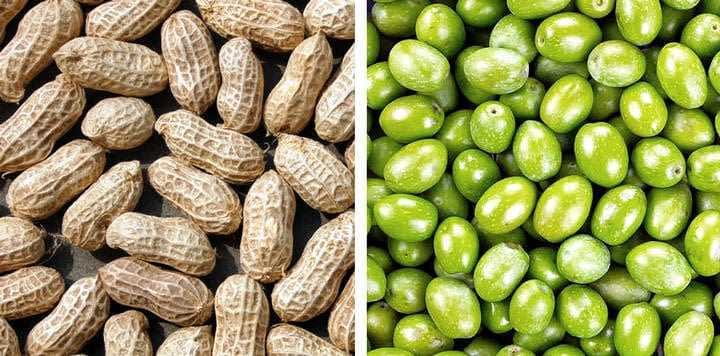Does Green Peanut Oil Stand Up to its Rising Popularity?
There is no scientific evidence for health benefits so it could be too soon to get excited about the newest miracle oil.
In the realm of edible oils, there’s a new kid on the block that “the best cooks in the South have come to think of as their local answer to extra-virgin olive oil,” reports Kim Severson, for the New York Times.
What is this new rising star? Southern green peanut oil.
Green peanut oil is not the conventional peanut oil that currently lines supermarket shelves, the kind that’s processed with high heat and chemicals. This ‘healthier’ oil is pressed straight from the fresh green peanuts at low temperatures, in many cases on local farms.
Severson reported on a local farmer, Clay Oliver, who presses the green peanuts he grows. What started as a small enterprise for Oliver, has fast become a culinary hit in the South and elsewhere. According to Severson, chefs are raving about the flavor and using it to enliven dishes, enhance roasted items, and generously swamp salads as if it were the ‘new’ extra virgin olive oil (EVOO).
Most green peanut oils are termed ‘artisan oils’ as they are cold pressed, unrefined, and contain no chemicals. Of course, in general terms, any oil that is cold pressed will contain more nutritional benefits than those that are heated and processed with chemicals.

But when it comes to nutrition, how does this new “extra virgin” peanut oil (EVPO) stack up against the good old trusty EVOO?
The answer is, who knows.
The description on the Oliver Farms website says it’s “full of monounsaturated fats, it also has Vitamins A, D, and E.” But, the actual nutrition facts for Oliver Farms Green Peanut Oil are nowhere to be found.
In fact, tracking down nutrition facts for cold pressed peanut oil is not an easy task and only results in limited information.
Olivado Extra Virgin Peanut Oil nutrition breakdown per one tablespoon is as follows: 120 calories, total fat 14 g, 10 g mono, 2 g poly, 2 g sat, 0 cholesterol. Another EVPO by Bell Plantation also has similar data.
These basic nutrition facts are very similar to EVOO per tablespoon. But that’s not enough to suggest a switch is warranted, even though it may taste good in some culinary applications. As already suggested, information on EVPO is limited. And from what can be seen, there are no facts reported regarding beneficial nutrients or compounds.
In terms of scientific research, one study from 1969 did look at the fatty acid composition of cold pressed peanut oil. But this study is considered too old to take seriously since our methods of nutritional evaluations have advanced so much in recent years. And in any case, it didn’t reveal anything of interest.
In terms of research-based health benefits at this stage, there are zero facts in relation to EVPO. On the other hand, EVOO has hundreds, if not thousands of scientific studies that connect it’s powerful polyphenols and compounds to lowered risk of many diseases such as cancer, cardiovascular disease, neurodegenerative disorders, and the metabolic syndrome, among others. It is clear to see that EVOO is the winner when it comes to its proven value to our health.
Another thing to consider before considering EVPO is peanut allergies. Those with peanut allergies will need to avoid it, as it is considered allergenic and may result in anaphylaxis. Consuming EVOO does not result in such side effects but is considered safe and beneficial for most people.
The acclaimed great flavor of the new rising star is clearly a highlight for chefs serving up their dishes. But for the rest of us, the switch to using green peanut oil on a daily basis may be a bit premature. Especially given the amount of evidence we currently have about EVOO and its positive health benefits.

